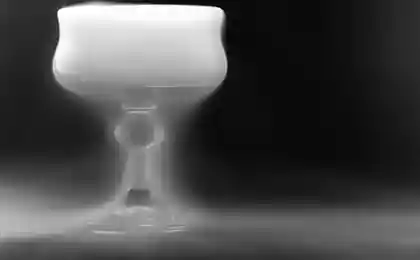987
What is the sound of an atom? Scientists have found that this note "re"
So say researchers from Chalmers University of Technology (Gothenburg, Sweden), published a new study in which they зафиксировали sound that emits a single atom.
"We have opened a new door to the world of quantum physics, we have" heard "the atoms and" talk "with them" - is written заявление made a study co-author Per Delsing , Professor of Physics at the University of Chalmers. "Our long-term goal - to use quantum physics so as to benefit from the principles of its operation, for example, when creating ultra computers».
For their study Delsing and his colleagues created an artificial atom size of 0, 01 mm and placed it on one end of the superconducting material. Then they missed the sound waves through the surface of the material so that those "bounced" from the atom, and recorded sound that came back, using a tiny microphone attached to the other end of the superconductor material.

The figure shows that on the right artificial atom generates sound waves that look like ripples on the surface of a solid material. Sound, known as surface acoustic waves, recorded "microphone" to the left - it consists of metallic elements linked to the "lock»
"In accordance with the theoretical assumptions, the sound emanating from the atom is divided into quantum particles", - said study co-author Martin Gustafson, PhD, of Columbia University. "These particles - the weakest form of sound that we can fix».
This sound was the note "re" about 20 octaves higher than the fifth (and last incomplete) octave piano - it is much higher than the range that the human ear can perceive.
The researchers said that the manipulation of sound at the quantum level may lead to new developments in the field of quantum computing. Sound has a short wavelength and is moved in the space 100 at a rate 000 times slower than the speed of light, and this means that it is much easier to control.
"Will this research on quantum computing technology - it is too early to say, but it certainly extends the techniques that we can use in the work», - рассказал Discovery News in an interview with Steve Ralston, one of the leaders of the Joint Institute for Quantum Physics at the University of Maryland, who did not participate in the study.
Needless study was published in the journal Science on September 11 of this year.
Source: geektimes.ru/company/audiomania/blog/242757/
"We have opened a new door to the world of quantum physics, we have" heard "the atoms and" talk "with them" - is written заявление made a study co-author Per Delsing , Professor of Physics at the University of Chalmers. "Our long-term goal - to use quantum physics so as to benefit from the principles of its operation, for example, when creating ultra computers».
For their study Delsing and his colleagues created an artificial atom size of 0, 01 mm and placed it on one end of the superconducting material. Then they missed the sound waves through the surface of the material so that those "bounced" from the atom, and recorded sound that came back, using a tiny microphone attached to the other end of the superconductor material.

The figure shows that on the right artificial atom generates sound waves that look like ripples on the surface of a solid material. Sound, known as surface acoustic waves, recorded "microphone" to the left - it consists of metallic elements linked to the "lock»
"In accordance with the theoretical assumptions, the sound emanating from the atom is divided into quantum particles", - said study co-author Martin Gustafson, PhD, of Columbia University. "These particles - the weakest form of sound that we can fix».
This sound was the note "re" about 20 octaves higher than the fifth (and last incomplete) octave piano - it is much higher than the range that the human ear can perceive.
The researchers said that the manipulation of sound at the quantum level may lead to new developments in the field of quantum computing. Sound has a short wavelength and is moved in the space 100 at a rate 000 times slower than the speed of light, and this means that it is much easier to control.
"Will this research on quantum computing technology - it is too early to say, but it certainly extends the techniques that we can use in the work», - рассказал Discovery News in an interview with Steve Ralston, one of the leaders of the Joint Institute for Quantum Physics at the University of Maryland, who did not participate in the study.
Needless study was published in the journal Science on September 11 of this year.
Source: geektimes.ru/company/audiomania/blog/242757/
Pirates as pioneers - the connection between the right to copy and economic structure
Mathematical clue "Star Night" by Van Gogh























